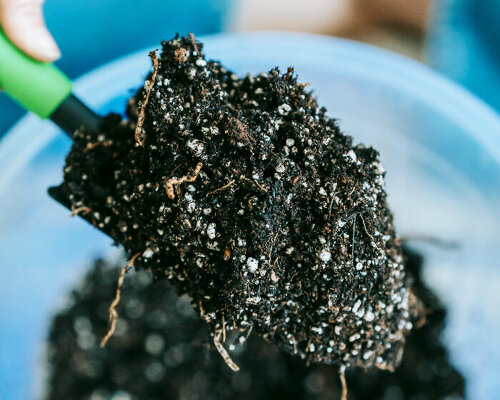Recycling used batteries from electric vehicles as fertilizers
Engineers at the University of Wisconsin–Milwaukee have developed a way to recycle used lithium iron phosphate batteries from electric vehicles into crop and plant fertilizers. These materials, commonly used in EVs, delivery vans, and buses, are just disposed of when they reach the end of their life, usually after ten years. The researchers hope that by repurposing these used batteries as fertilizers, they can help the agriculture industry and reduce using the traditional recycling methods, which are considered costly and complicated, given that the recovered materials from the process, like iron and phosphate, don’t cost much and make the battery recycling more expensive than it is.
The engineers, led by Dr. Deyang Qu, the Department Chair of Biomedical Engineering at the University of Wisconsin–Milwaukee, use a chemical method called ion exchange, a process already used in many industries, such as water purification. In this recycling system, the IX process helps replace lithium ions with hydrogen or potassium ions using resin, which works like a filter that can swap certain elements for others. Two types of resins are used to recycle the used batteries from electric vehicles: strong acid cation resins and K-form (potassium-based) resins.
photo by Vladimir Srajber, via Pexels
Resin helps repurpose discarded batteries
When the used batteries from electric vehicles are placed in the ion-exchange system, lithium ions move out of them and attach to the resin. At the same time, potassium ions from the resin replace the lithium in the material, so the exchange allows more than 90 percent of the lithium to be recovered efficiently. The leftover solution after the lithium is removed still contains phosphorus and other elements from the battery, and it is these parts that can be recycled into fertilizers. It means that one recycling process produces two useful results: the recovery of lithium for new batteries and the creation of fertilizer ingredients for agriculture. The ion-exchange and regeneration reactions can reach balance in as little as 20 minutes, making the method efficient. The entire process is also commercially mature, so the equipment and technology already exist and can be scaled up for industrial use.
Dr. Deyang Qu, who leads the university research, says that the high cost of current recycling systems has inspired his team to look for a new approach. Instead of focusing only on recovering battery materials for reuse in electronics, they explored how these materials could serve a new purpose in agriculture. Their tests have shown that the recycled used batteries from electric vehicles can function as fertilizer, depending on how they are processed. The study has already been tested at laboratory scale with support from the University of Wisconsin–Milwaukee’s internal Discovery and Innovation Grant and collaboration with the Department of Agriculture in the US. The next stage is to produce larger amounts of fertilizer to compare its performance with regular ones in farming tests. The researchers plan to conduct a one-acre tomato crop trial to study how well the fertilizer works. If the results are successful, they expect to present the findings to major fertilizer manufacturers and explore large-scale production.
engineers can recycle used batteries from electric vehicles into fertilizers | photo by Vladimir Srajber, via Pexels
the process replaces lithium ions with hydrogen or potassium ions using resin | photo by Teona Swift, via Pexels
Deyang Qu holds a lithium iron phosphate battery | image courtesy of the University of Wisconsin–Milwaukee
project info:
institution: University of Wisconsin–Milwaukee | @uwmilwaukee
lead engineer: Dr. Deyang Qu
The post used batteries from electric vehicles return to greener life as fertilizers appeared first on designboom | architecture & design magazine.

